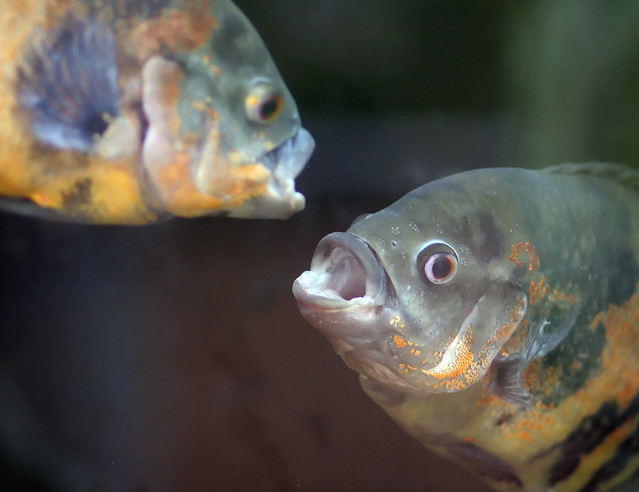 |
This is a picture of two Oscar Fish in a Fish Tank (Photo credit: Wikipedia)
|
#1 - Oscar fish only like other Oscars.
Oscars are schooling fish, and they only like being with their own kind. They won't appreciate it when mixed in with different species and are known to attack other fish.
Oscars would love it if they schooled with a few other of their own kind in the fish tank. Remember that these fish can grow to be pretty big, so make sure to give at least 30 gallons of swimming space for them. If you take care of your Oscars well, they can live up to fifteen years.
#2 - Oscar can spawn with the best of them.
There are many Oscar species out there, and some of them change colours when they're ready to mate. If you have a male and a female Oscar in the same tank, they might spawn thousands of eggs at once. If you don't want to deal with a fish tank full of Oscars, then it might be a good idea to put one Oscar in a different location until its color changes back to its original color.
#3 - Oscars need specific conditions to survive.
Aside from a big enough tank, the usual filters, aerators, and lighting, Oscars thrive in clean, clear water with temperatures around 28 degrees Celsius. For some reason, they also prefer sandy bottoms to gravel. They feed on carnivorous fish food -- you can check with your local pet store if they have any fish food that's specifically for Oscars.
Surprisingly, Oscars can also eat food scraps such as shrimp, worms, and vegetables. Oscars only need to be fed once a day, and make sure you only give so much food that they can consume everything in three minutes.
Oscars are great pets to have, and it's always a temptation to add another one to the fish tank. Remember, though, that it's best to add an Oscar that's around the same size as the Oscars already in the tank. This will make sure that they'll get along swimmingly.
|





